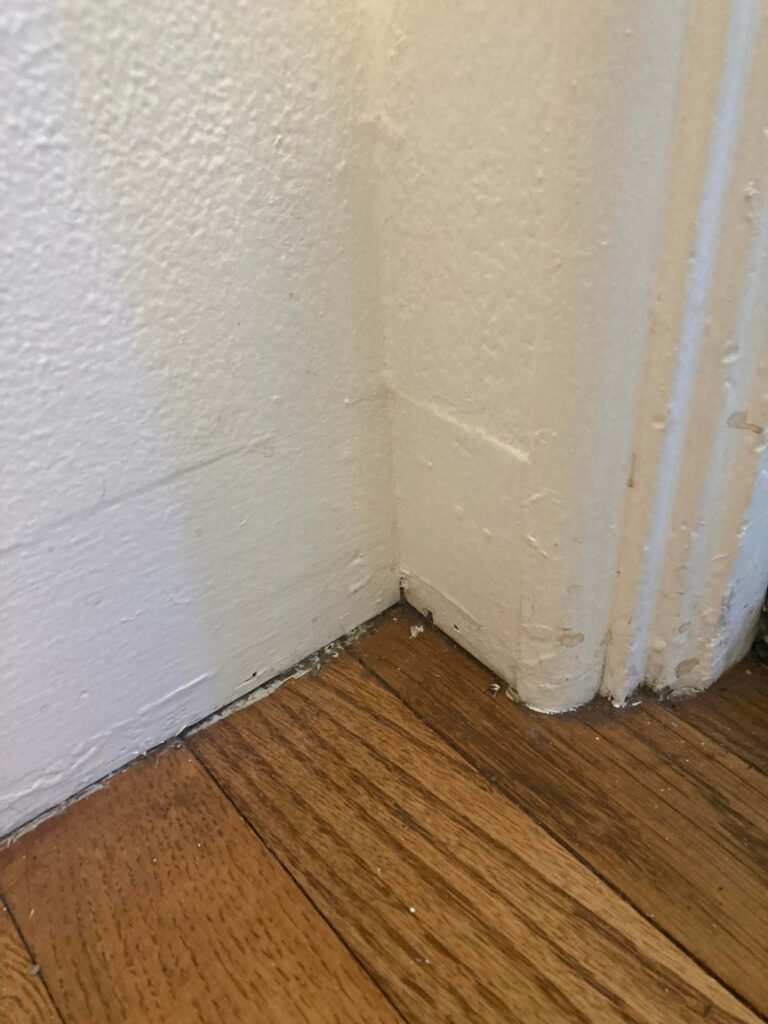
My 1953 home has lath and plaster walls with rounded corners and no trim or baseboards. How do we allow space for the expansion gap without baseboards? The original hardwood floor seems to go right under the walls. I wonder if we might cut into that wood and slide the new planks right under the walls?
Members of our facebook group for midcentury home owners were happy to help.
Below are some examples of members thoughts on the topic. These are only a few of the thousands of tips that are shared in our exclusive Facebook Group dedicated to midcentury modern home owners. If you own a midcentury house and are not already a member, join us now!
- “Please use oak instead of bamboo… That said if you want the clean look with no quarter round you will need to undercut that moulding around the entire room. Doable but tedious- usually it’s only done at door jambs.”
- “I would think you would just cover the expansion gap with shoe or quarter round moulding.“
- “I think you may actually have trim that’s been plastered over. It certainly looks like there is or may have been trim at one time.”
- “Why not add a minimal baseboard? IMHO quarter-round always screams either a) “We re-did the floors after the house was built” or b) “The floor guys did their job last and didn’t do it well so we covered up the gap with quarter round.”
- “They look like recessed baseboards.”
- “I’ve been in the wood floor business for 30 years. I can see where there used to be shoe moulding at the bottom of what appears to be recessed baseboard. New flooring will need an expansion space around the edges necessitating trim to cover that gap. Cutting the bottom of the existing base off can be done but it comes with risk and is rarely a nice tight fit to the floor. I’d advise leaving a minimal expansion space and going with a 1/2×3/4” shoe moulding painted to match. Baseboard, quarter round and shoe moulding are 3 different things, people frequently use those terms interchangeably but they are not.”
You can read more tips about this topic and offer your own suggestions here.
